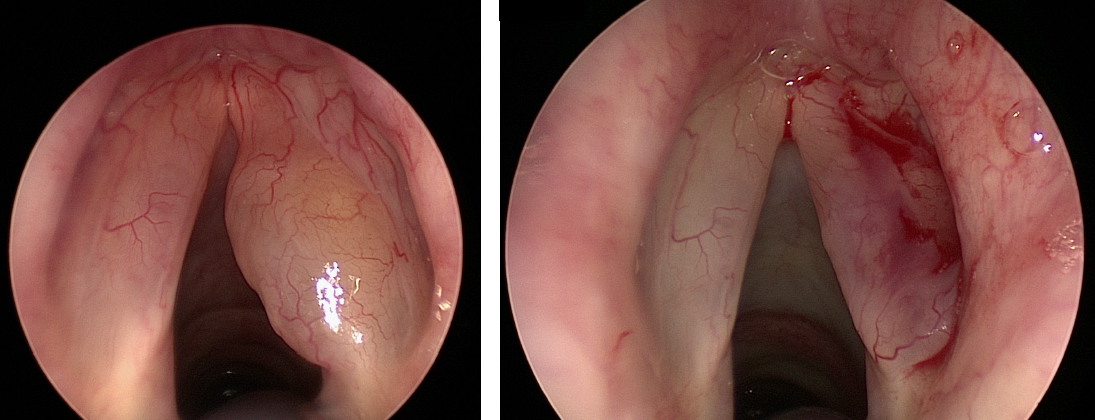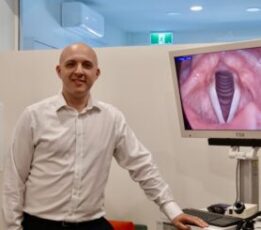Polypoid Corditis (Reinke's Oedema)
Definition
Polypoid Corditis, also known as Reinke’s Oedema, is a benign(not cancerous),jelly-like swelling condition affecting both(though sometimes one) true vocal folds. This generally soft swelling isusually located on the upper surface of the vocal fold, but if large enough can ‘fall’ into the airway over the edges of the vocal fold. It can vary in size, and pliability. Initially, the changes can be quite subtle, but with time & chronicity, these canbecome quite large, hard, and ulcerated, and develop a thickened white appearance on the surface. This can sometimes mimic the appearance of pre-cancerouslesions. They can also become so large that breathing can be affected.
Causes:
Polypoid corditisis more common in females. It is a condition commonly associated with smoking –in fact, 97% of patients with polypoid corditis are smokers. Laryngopharyngeal reflux is another important contributing co-factor. Lastly, faulty voice use patterns or vocal traumaare also major contributing factors.This may include using the voice in a strained way, yelling, speaking over background noise for long periods of time or singing in a less than efficient way.

Examples of Polypoid Corditis; Mild vs Moderate/Severe
Diagnosis:
On clinical history, Hoarseness with a lowered pitch and vocal instabilityis the most common symptom.Female patients with polypoid corditis often complain of have a masculine sounding voice.Rarely, the swellings become so large that they cause difficulty breathing, although this is rarely an emergency. Polypoid Corditiscan be detected via mirror laryngoscopy or nasendoscopy under normal light but you can’t be 100% assured that this is the correct diagnosis without stroboscopic evaluation. A stroboscopic evaluation gives us an idea of the vibratory characteristics of the vocal folds, which is important with polypoid corditis, as some are soft and pliable, whereas others are firm and stiff.Stroboscopy can also provide an indication as to the depth/thickness of any vocal fold surface thickening or white patches.
Management:
Varies according to the size and characteristics of the polypoid corditis, the functional impactand if there are any areas of concern for pre-cancer or cancer(very rare). In all patients, the cornerstone to long-term therapeutic success is smoking cessation, successful treatment of any laryngo-pharyngeal reflux disease (diet, lifestyle, medications), and speech therapy that aims to decrease the sizeof the swollen vocal foldsand eliminate the voice use patterns that may have contributedthem in the first place. More established corditis will also respond well to therapy but will need longer to recede. There are some cases that require surgical treatment due to:
- failure of more conservative treatments,
- a concern regarding breathing
- A concern regarding pre-cancer or cancer (rarely)
Surgical treatment can range from awake ‘office-based’ procedures, such as steroid injections into the vocal folds, or pKTP laser treatment, through to formal endoscopic surgical reduction/removal. This can be achieved using non-powered surgical instruments, or laser.
Recommendations:
- Smoking Cessation
- Treat any laryngopharyngeal reflux with diet, lifestyle and possibly medications
- Commence voice therapy with a speech pathologist.
- Address singing voice use as well if a singer
- Review the diagnosis if there is no progress preferablyby undergoing videostroboscopy.
- Review the size and severity of the corditis, and the functional impact, after medical treatments and voice therapy to determine whether there is a need for surgical treatment.

Right unilateral polypoid corditis –before and after surgical reduction







